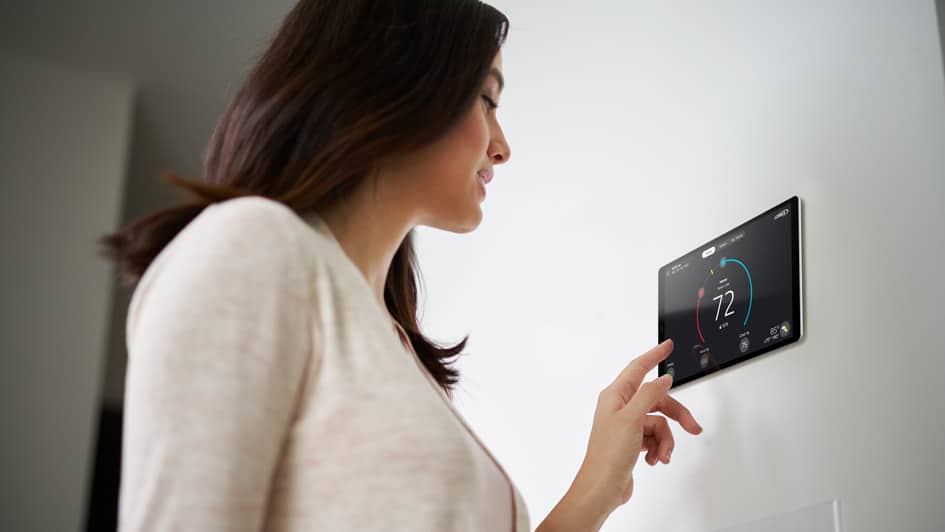Once the weather starts to cool off, you might be wondering about how you’ll make the most of your heating and cooling. After all, HVAC expenses frequently contribute a significant portion of your monthly electric bill. To try and find ways to reduce costs, some people look closer at their thermostat. Could there be a setting they should use to increase efficiency?
Most thermostats have a ‘Fan’ or ‘Fan On’ setting. But if the fan is running during a regular cycle, what can the fan setting provide for an HVAC system? This guide should help. We’ll walk through just what the fan setting is and whether you can use it to reduce costs over the summer or winter.
Should I Use My Thermostat’s Fan Setting?
For the majority of thermostats, the fan setting signifies that the HVAC blower fan remains on. Some furnaces will generate heat at a low level in this setting, but in general heating or cooling isn’t being produced. The ‘Auto’ setting, in contrast, will run the fan during a heating or cooling cycle and switch it off when the cycle is complete.
There are benefits and drawbacks to switching on the fan setting on your thermostat, and whether you do or don’t {will|can|should]] depend on your personal comfort requirements.
Advantages to switching to the Fan/On setting:
- You can keep the temperature in each room more uniform by permitting the fan to keep generating airflow.
- Indoor air quality can increase because continuous airflow will keep moving airborne particles into the air filter.
- Fewer start-stop cycles for the HVAC fan helps extend its life span. Since the air handler is typically a component of the furnace, this means you might avoid needing furnace repair.
Downsides to using the Fan/On setting:
- A constant fan will likely increase your energy bills somewhat.
- Nonstop airflow could clog your air filter soon, increasing the frequency you’ll need to replace it.
{Choosing Between|Should My Thermostat Be on|Which Setting for My Thermostat? Fan or Auto in Summer/Winter
In the summer, warm air will sometimes linger in unfinished spaces such as the attic or an attached garage. If you leave the fan on, your HVAC system can gradually move this warm air into the rest of your home, forcing the HVAC system to work more to preserve the preferred temperature. In severe heat, this could lead to needing AC repair more regularly as wear and tear gets worse.
The opposite can take place over the winter. Cooler spaces like a basement will hold onto cooler air, which may eventually make its way into the rest of your home. Leaving the fan setting on will sometimes draw more cold air upward, increasing the amount of heating you need to stay warm.
If you’re still trying to figure out if you should use the fan/on setting, keep in mind that every home and family’s comfort needs are different. Leaving the HVAC system’s fan on may work for you if:
Someone in your household has allergies. Allergies and similar respiratory conditions can be tough on the family. Leaving the fan on can help to increase indoor air quality, helping your family breathe easier.
Your home has hot and cold spots. Many homes wrestle with persistent hot and cold spots that quickly return to a temperature different from the rest of the house. The fan setting can help minimize these changes by constantly refreshing each room’s supply of air.




